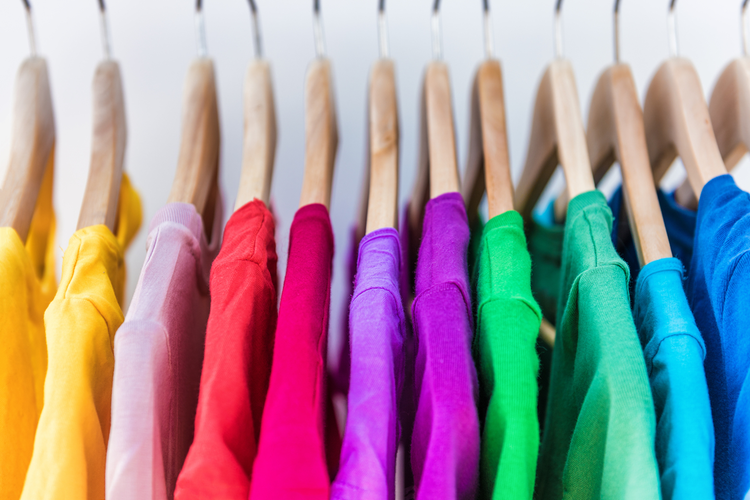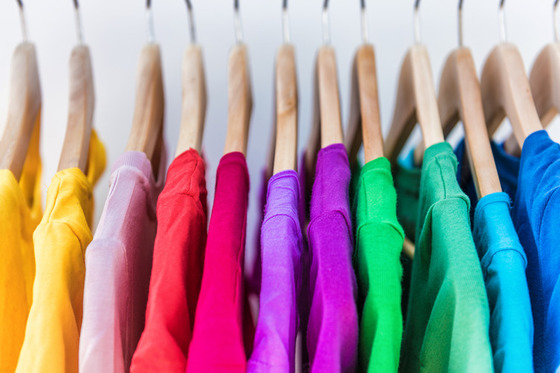Welcome to Thomas Insights — every day, we publish the latest news and analysis to keep our readers up to date on what’s happening in industry. Sign up here to get the day’s top stories delivered straight to your inbox.

Consumers love the latest fashions. Unfortunately, each year 21 billion pounds of textiles are sent to landfills. How do textile manufacturers balance inherent waste while still getting the customer trending fashion?
The first step is understanding the problem. The apparel industry accounts for 10% of global carbon emissions and 20% of global water waste, according to a report by the United Nations Economic Commission for Europe. Not only does the industry waste resources, it contributes a significant amount of pollution. Textile manufacturing can emit microplastics into water systems, contaminating water supplies for humans, animals, and plant life.
“Fast fashion” might meet consumers’ need for newness, but more than 85% of post-consumer textiles end up in landfills. Consumers are purchasing clothing faster, but only keeping them for half as long to keep up with the latest fashion trends.
What’s the solution?
Changing Preferences
According to McKinsey and Company’s State of Fashion Report 2019, created in collaboration with Business of Fashion, one of the top 10 trends impacting the industry is “radical transparency.” People want proof that manufacturers are sourcing and providing products in a socially responsible manner.
A recent study shows that both Millennials and Gen Z are claiming to be socially responsible shoppers, at 42% and 37% respectively. They are demanding products that can be proven to be manufactured and distributed in an ethical manner. Companies are now meeting their demand by reviewing their supply chains for ethical processes that they can prove to the market.
Rent and Reuse Fashion
To meet consumers’ need for the latest fashion, companies are rethinking how to bring not only new but recycled fashion to the market. Rental platforms allow customers to customize and frequently update their closets.
Creating a “circular economy” that allows customers to return items isn’t easy and requires an efficient yet reverse logistics model. While there are new players in the market, it takes a significant investment to allow consumers to rent and return fashion at a reasonable price — around $200 per month — but these platforms are growing in acceptance.
Reusing fashion isn’t just limited to your local thrift store. TheRealReal allows customers to consign luxury items, creating an economy for those who like to rent and reuse top quality items. For example, customers can consign Stella McCartney fashions and receive a $100 gift card to the brand’s store.
New Manufacturing Processes and Fabrics
Textile designers and innovators are creating fabrics that are environmentally friendly yet fashion-forward. As well, companies are inventing ways to reduce or eliminate the amount of chemicals that go into the textile manufacturing process. In 2018, Levi Strauss announced they would start using lasers in their denim finishing process, reducing the amount of chemicals and labor that goes into their clothing.
Companies are experimenting with bioengineered fabrics that are lighter and longer lasting, including lab-grown leather and synthetic materials. The problem for these companies is scalability as they continue to raise millions of dollars to meet industry demand, which will take time. The fashion industry still survives on products that have been in existence for hundreds of years, including cotton, wool, silk, and other common materials, and it may have to wait until engineered fabrics gain greater acceptance and are more widely available.
Regulation
The fashion industry is not without regulation. The U.S., China, and Europe all regulate chemical industries, which provide dyes and treatments for fabrics. Companies, including textile manufacturers, must prove they are in compliance with these laws.
Value Supply Chain
Companies are responding to the increasing consumer demand for clothing that is ethical yet doesn’t destroy the environment. While regulation is helpful, it cannot keep up with the fast-paced change demanded by customers.
Coalitions like the CDP are bringing together suppliers and retailers with significant procurement power to review their entire supply chain and use their influence to incentivize their suppliers to comply with environmental and socially responsible policies. Currently, the CDP’s members have more than $66 billion in procurement power and can leverage significant influence within their individual supply chains.
One CDP participant, WalMart, in partnership with the Sustainability Consortium’s help, has identified “hot spots” to address within their textile value chain. This will allow them to examine important issues that will improve transparency throughout their supply chain.
“Our vision is for all textile products to be sustainably designed, sustainably produced, and made with quality that lasts,” reports the WalMart website. “We are challenging suppliers to deliver Every Day Low True Cost (EDLTC) products that are not only affordable but are also produced in a way that is more sustainable for people and the environment.”
New software exists for companies to develop their own value supply chains. Sourcemap is a tool that allows companies to map their entire supply chains, allowing companies to collect data, visualize, and report their findings. Once mapped, companies can review the products, inventory, and the impact they have on the environment. Sourcemap’s founder and CEO, Leonardo Bonanni, says: “Fashion supply chains are among the most complex in the world because they can change with every season, every style.”
More Work to Do
As long as the demand for fast fashion exists, customers will continue to crave a stream of new textiles. The industry, including their vendor partners, are taking the lead to improve fabrics and create a more environmentally sound approach to fashion and overcome the hurdles of complex global supply chains.
Want More on Sustainable Fashion from Thomas?
Image Credit: Maridav / Shutterstock.com


